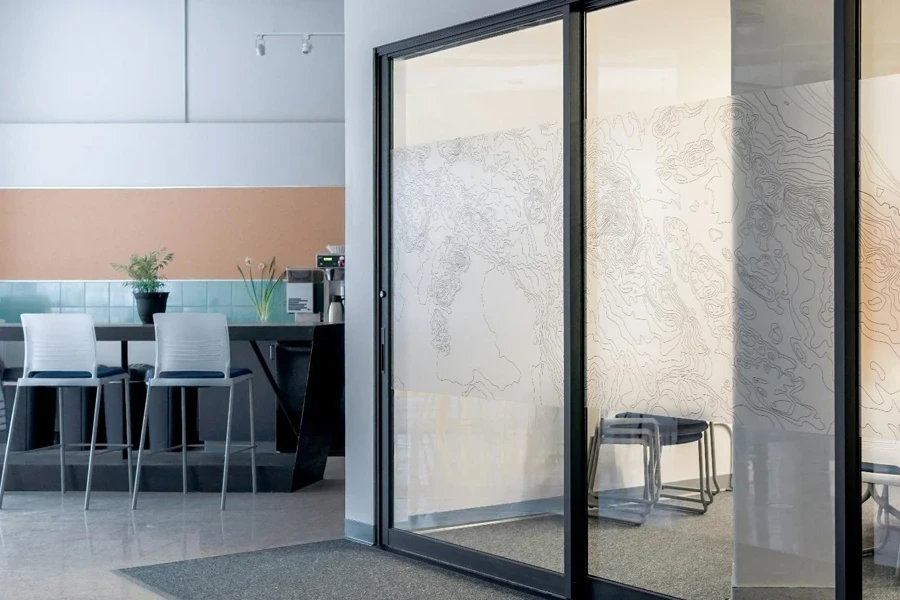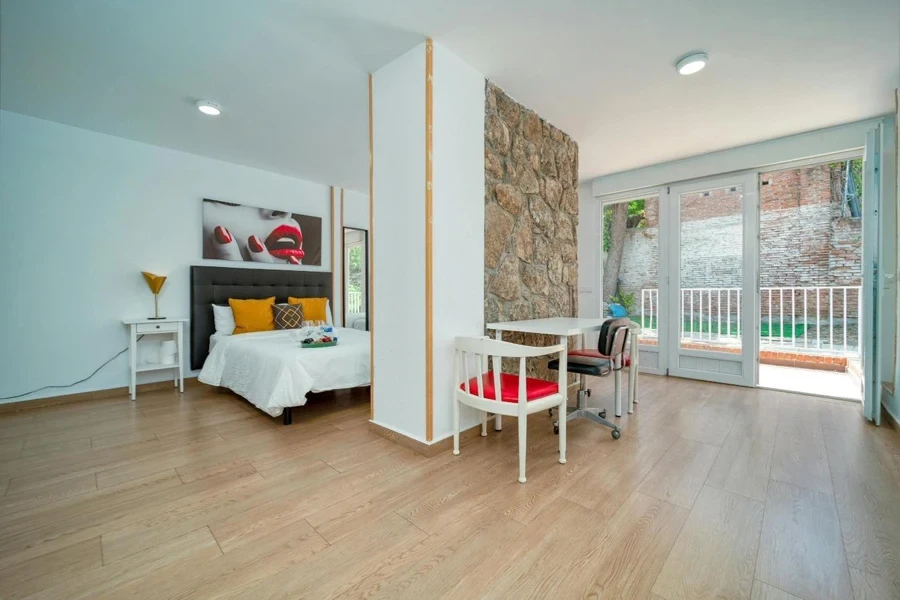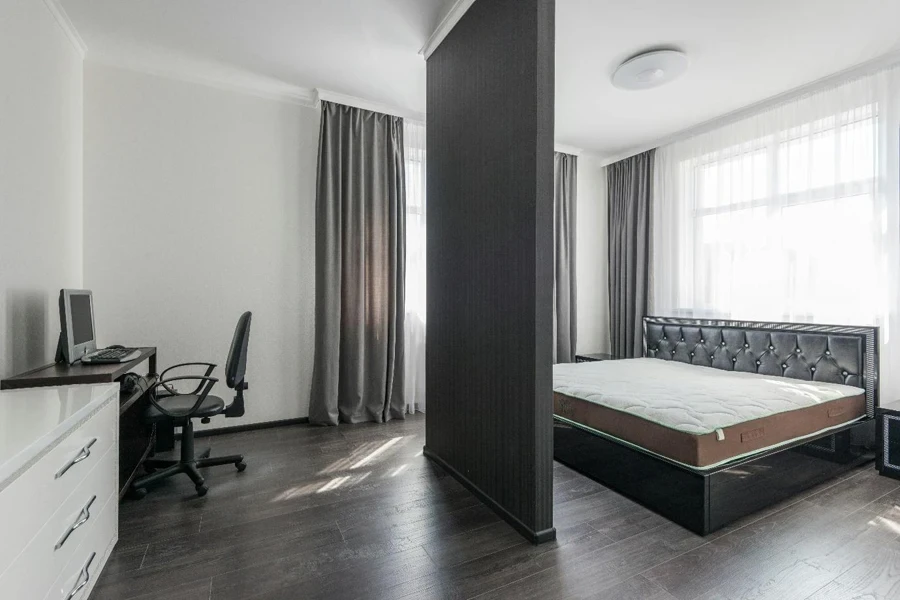Screens and room dividers have become essential tools for optimizing both commercial and personal spaces, offering a balance of functionality and aesthetic enhancement. As flexible layouts and privacy become more important in modern environments, understanding the diverse range of products and their market trends is crucial for professional buyers. From partitioning office spaces to enhancing hospitality and healthcare settings, selecting the right room divider can significantly impact productivity and design. This article provides a comprehensive look at market growth, key product types, and essential factors to consider when purchasing. Staying informed about these trends will ensure smarter investments in versatile and stylish solutions.
Table of Contents
● Understanding the commercial room divider market landscape
● Exploring the different types of room dividers and their unique features
● Key factors to consider when selecting the right room divider
● Conclusion
Understanding the commercial room divider market landscape

Current market size and growth projections
The room divider market is seeing an uptick in growth due to a surge in demand within commercial environments. As of 2024, the market is worth around USD 1.71 billion. It is projected to increase at 6.7%, potentially reaching USD 2.87 billion by 2031, as indicated by Verified Market Research. This increase can be linked to the growing need for cost-adaptable solutions within commercial establishments, like offices, medical centers, and schools. Given the increasing demand for adaptable space layouts, the market is poised for more growth.
Key drivers of market growth
Many factors drive the rising demand for room separators. Startups and adaptable office spaces require partitions that can delineate workspaces and uphold an open-plan layout seamlessly. Aside from that, the growth of the healthcare industry and the increasing number of hospitals also contribute to the utilization of separators to establish patient spaces. Verified Market Research indicates that wooden partitions hold the largest market share because of their long-lasting nature and extensive application in office and healthcare settings. The increasing popularity of materials such as fabric and metal is also fueled by their versatility and cost efficiency.
Regional market trends and segment breakdown
North America largely leads the room divider market due to the rise in offices and healthcare facilities in the United States. Europe is behind with a surge in demand for office setups. Meanwhile, the Asia Pacific region is quickly growing, with nations like China and India making advancements in infrastructure and healthcare sectors. Different types of room dividers, like wood dividers, are popular for places like offices and hospitals because they lead in revenue generation among dividers for their functionality. Fabric and glass dividers are gaining popularity due to their attractive design and practicality.
Exploring the different types of room dividers and their unique features

Folding room dividers
Room dividers that fold up are highly valued for their portability and lightweight structure. They are typically made with aluminum frames and various materials, like fabric, wood veneer, or PVC panels connected by metal hinges for effortless folding and unfolding. This makes them ideal for adjustable layouts in dynamic work environments. Modern variants often feature layers of insulation to enhance their noise-reducing capabilities. This feature is valuable, especially in shared office spaces or public settings. The panels usually range from 10 to 25 millimeters thick to strike a balance between strength and flexibility.
Room divider shelves
Room dividers with shelves provide storage space and divide rooms with sophistication and style using materials like engineered wood and steel frames. Sometimes, tempered glass is even incorporated for added stability and aesthetics. These versatile shelves are designed to support weights between 50 and 100 kg based on their construction quality, which is sturdy enough to hold books or decorative items. Many of these shelves feature adjustable shelving options to accommodate items of different sizes. The actual shelves are commonly crafted from durable laminate-coated MDF for long-lasting use. Furthermore, these separators often have safety features to prevent tipping over, ensuring security in places such as offices or public waiting areas.
Hanging room dividers
Room dividers that hang usually consist of fabric panels made of polyester, woven textiles, or beaded acrylic strands. They are hung from tracks attached to the ceiling that are typically anodized aluminum in material composition. They can hold weights up to 50 kg to keep the dividers steady. Many of these fabric dividers are designed to be fire-resistant and comply with safety standards like NFPA 701, making them a great choice for commercial spaces. The panels may also feature solid layers that provide levels of privacy while still permitting natural light to filter through the area. They are easily accessible and simple to move and retract using sliding mechanisms when unnecessary.
Room divider panels

Room divider panels offer a range of options, with acoustic, magnetic, or glass finishes being the most common. Acoustic panels often feature a sound-absorbing foam core that reduces noise levels by up to 40-50 decibels, making them highly effective in open-plan offices or healthcare environments. Magnetic panels, constructed with porcelain-over-steel surfaces, are durable and allow for functionality as both a whiteboard and a partition. Thin panels of tempered glass measuring around 8 to 12 mm in thickness offer a see-through option that balances privacy with the passage of light. These panels often come with coatings against scratches and UV rays to ensure durability for long periods in busy environments.
Wooden room dividers
Wood room separators are crafted from engineered timber. They frequently include fire retardant finishes and noise-reducing interiors to improve their usefulness functionally. The structures typically consist of hardwood or aluminum for robustness and resilience, while the timber panels could feature coated surfaces to withstand scratches and damage caused by moisture. Wooden partitions usually range from 25 to 50 mm in thickness, delivering isolation with the capacity to lower noise transmission by as much as 40 decibels. Many designs also incorporate layers of fabric and perforated panels to improve sound absorption further and are well-suited for application in office spaces, hospitals, and schools.
Mobile and modular dividers
Portable and flexible separators have frames crafted from aluminum or powder-coated steel to last long and withstand daily use. They are typically equipped with locking wheels that can hold up to 200 kg per segment for effortless movement within changing work environments. These modular dividers incorporate locking features that let users link panels together in setups like straight lines or zigzag patterns. Modular acoustic panels usually consist of a core incorporating materials such as compressed fiberglass or polyester insulation that can reduce noise by up to 45 decibels.
Specialty dividers
Specialized dividers are crafted to cater to functional requirements; for instance, magnetic whiteboards commonly utilize porcelain enamel for a robust surface resistant to scratches while ensuring smooth marker application and effortless erasing capabilities. Absorbing dividers are built with honeycomb cores enveloped in fabric or vinyl, which is ideal for offices or classrooms. Certain variations come equipped with plexiglass or polycarbonate inserts that provide durability against impacts and shield them from UV rays. These items are usually around 6 to 10 millimeters thick to give durability and clarity, qualities that are highly valued in healthcare environments due to their emphasis on cleanliness and visibility.
Key factors to consider when selecting the right room divider

Space and size requirements
To choose the right room divider, start by measuring the space where you plan to place it. Ensure the divider fits well without blocking movement or natural light to maintain practicality and appeal. Room dividers should be tall to provide privacy but not dominate the room, usually falling between 1.5 to 2 meters in height. For spaces with changing requirements, think about dividers with adjustable heights. In spaces where people walk a lot, picking a slim design can help prevent it from blocking paths or limiting the amount of sunlight coming in naturally, making it simpler to fit into communal areas.
Privacy and sound control
When you need to create quiet areas with sound control in mind, choosing dividers that can effectively manage sound is important. Opting for dividers made of materials like acoustic foam, fabric-covered panels, or solid wood can significantly reduce noise levels, with some dividers even offering soundproofing capabilities of around 40 to 45 decibels. Dividers crafted from tempered glass or plexiglass might be a good choice for separation while still allowing natural light to filter through, but they tend to be less effective in blocking out unwanted sounds. Fabric and vinyl panels provide sound absorption qualities; they are particularly well suited for environments such as offices and schools where managing background noise is important.
Material durability and maintenance
When choosing a room divider for your space, durability and ease of maintenance are key factors to consider. Wooden dividers are popular for their enduring quality and timeless look; however, they may need polishing. It could be affected by moisture damage without proper sealing. On the other hand, metal dividers made from aluminum or steel are extremely durable and easy to maintain; hence, they are ideal for busy spaces or industrial settings. Glass dividers provide a modern touch, but regular cleaning is needed to prevent fingerprints and smudges. Cloth partitions provide sound absorption but may need maintenance because they can easily get stained; however, many modern styles use fabrics that resist stains or can be washed in a machine, making upkeep easier.
Aesthetic and design preferences
When picking a room divider for your space to serve its purpose and enhance the look, consider how the material choice and design will blend with your decor style. For example, wooden dividers with natural finishes can bring a touch to traditional or rustic spaces, and glass or metal dividers suit modern and minimalist settings well. Certain dividers offer panels that let you switch up the fabric or material. This gives you flexibility to match your divider with any changes in your design. Finding the right balance is key when it comes to the divider, and it should serve its purpose effectively and add to the room’s overall atmosphere.
Mobility and ease of installation
When deciding between stationary and mobile room dividers, consider how often the layout will be altered. Mobile dividers with casters offer flexibility in spaces like offices, event venues, or classrooms where changes are frequent. These dividers can be moved around and put away effortlessly. Meanwhile, stationary dividers, like wall-mounted or freestanding options, are better suited for spaces that require a fixed setup. When it comes to setting up dividers in a space without support structures, stand-alone dividers are simpler to put in place and usually don’t need any tools. Wall-mounted dividers might provide stability, although their installation can be more intricate. Your decision about the installation type should depend mainly on how you plan to use the space and how frequently you’ll need to shift the divider.
Budget and functionality
When selecting a room divider that meets your needs as a buyer, you must balance style appeal with durability and affordability in mind. Wooden dividers provide a luxurious look but have higher costs and upkeep duties. Metal and fabric dividers present economical options with less maintenance needs, making them a favored choice in office and educational settings. When looking for multi-functional items, like dividers that can also function as storage units or whiteboards, consider how these extra features enhance the usefulness and organization of the area they are inquiring about.
Conclusion

Finding the best room divider is crucial for balancing practicality and style in business and personal settings. The market provides many choices, from folding screens to customizable panels. So it’s important to keep up with the trends and features to choose what suits your needs best. By focusing on aspects such as privacy levels, noise reduction capabilities, longevity, and how well it blends with the decor, you ensure that your chosen divider not only serves its intended purpose but also adds to the overall ambiance of the space. In a world where the need for room divisions is on the rise with increasing market demand trends, it is paramount to choose a room divider that suits your needs.



